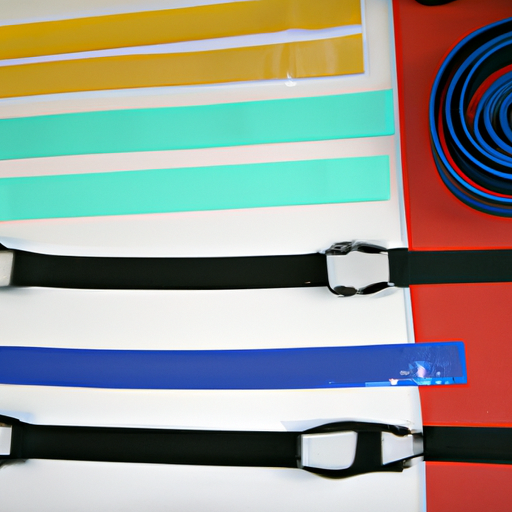
How to Choose the Right Resistance Bands for Your Workouts
Resistance bands are the chameleons of workout equipment — versatile, accessible, and great for strength training. They're affordable, portable, and perfect for both gym lovers and home fitness fans. But with so many different types, choosing the right resistance band can feel like an endless game of fitness roulette. Don’t worry; we’ve got you covered with everything you need to know!
Why Resistance Bands?
Resistance bands are an excellent addition to any strength training routine. They’re not just rubber strips that taunt your biceps; these bands help improve flexibility, boost strength, and can even assist with rehabilitation. Their lightweight nature means they can travel wherever you do, turning any space into a makeshift gym.
Types of Resistance Bands
Before diving headlong into the world of resistance bands, it’s essential to understand the varieties available:
- Therapy Bands: Often used for rehabilitation, these flat and thin bands are gentle on the muscles.
- Compact Bands: Tube-like with handles, they're great for regular strength workouts.
- Fit Loop Bands: Loop-shaped and commonly used for lower-body workouts.
- Figure 8 Bands: Shaped like an eight and offer a stronger grip, perfect for upper body exercises.
- Lateral Bands: Designed for specific targeted movements, often for the lower body.
Choosing the Perfect Resistance Bands
Finding the right resistance bands for your strength training regime depends on several factors:
1. Understand Your Fitness Goals
Are you looking to build muscle, increase flexibility, or maybe embrace the art of self-restraining from ice cream? Different bands serve different needs, so it’s important to identify yours.
2. Assess Your Current Fitness Level
There’s no point buying the heaviest resistance band if you’ve spent more time lifting donuts than dumbbells. Consider starting with a lower resistance and work your way up.
3. Quality and Material
Not all bands are created equal. Look for durable material that won't snap back like a rubber band in a bad joke. Latex and rubber are common, but if you’ve got latex allergies, best to steer clear!
4. Think About Versatility
Consider what exercises you plan to perform. Compact bands with handles might be more suited to total body workouts, while loop bands often shine in lower body workouts.
5. Budget Considerations
Budget is important as well. However, a more expensive band doesn’t always mean better quality. Evaluate the bands and ensure they give you the best resistance-for-buck experience.
Top Resistance Band Workouts
Once you have your bands in hand, you’ll want to start using them right away. Here are some favorite exercises to get you started:
- Banded Squats: Perfect for boosting those glutes. Place a loop band above your knees while squatting.
- Chest Press: Using a compact band, mimic the bench press motion for chest sculpting.
- Seated Row: Target back muscles with a resistance band row.
- Lateral Band Walks: Strengthen thighs with lateral movements using a looped band.
- Overhead Tricep Extension: Crank up arm day using a tube band.
Safety Tips When Using Resistance Bands
As with any workout equipment, it’s important to stay safe:
- Always inspect your bands for tears and wear. It's not just the band's reputation at stake!
- Start with easier resistance and incrementally increase.
- Be cautious of overstretching. Bands can hit back, literally.
- Avoid using bands on slippery or sharp surfaces.
The Bottom Line
By understanding your fitness level and goals, you'll find the best resistance bands to enhance your workout regimen. Whether you're a novice or a seasoned athlete, these colorful, stretchy companions are bound to add new layers of challenge and fun to your body's routine. So, are you ready to band together for fitness success? From stretching to strength training, resistance bands have your back (and biceps, glutes, and everything in between).
